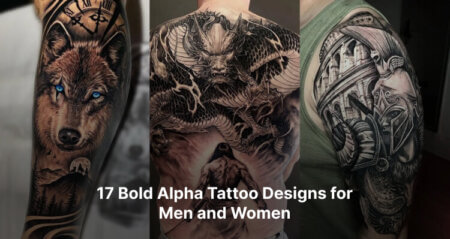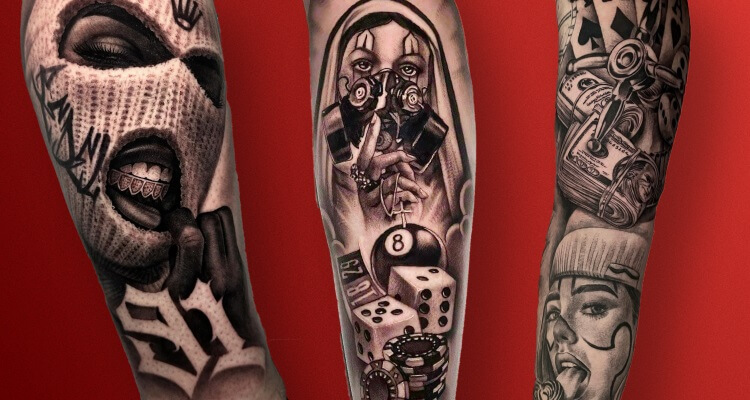
Chicano Tattoo Style: History, Meaning and Design
Posted on
Chicano tattoo style is a distinct and unique type of body art, most likely originated among the Chicano people of the United States. It is represented through black and gray shades, heavy lines, elements, and other components such as portraits, religious images, calligraphy, and lowriders which have a deeply personal and cultural meaning to the designs. In addition to its aesthetic value, the Chicano style is a sign of the fight and success of the people it belongs to, a kind of way to capture faith, family, and life journey.
Historical Background of Chicano Tattoo Style
The origins of Chicano tattooing can solely be attributed to the mid-century Mexican-American cultural movement especially, between the 1940s and 1950s in American barrios that include Los Angeles and other cities where Chicanos lived. It emerged as an expression for marginalized peoples, often closely tied to the struggles and resistances faced by the Chicano community.
In the early 1960s and 1970s, over the Anglo-dominated movement which was named after civil rights and cultural adoration, the tattoo design got more imbued with the artsy expression of the Chicano. The appearance of prison art was an important factor in its development because prisoners used improvised tools and a minimum of materials to carve delicate ornaments. This evolved to fine line works, black and gray shading and logos, religious images, Aztec or Mayan themes, lowriders, and script letters.
Over time, the Chicano tattoo style evolved and became a worldwide appreciated brand of tattoo art. Today, it is an anthology of Chicano culture and an instrument for making powerful statements that connect the past with the present in many of its aspects.
Meaning Associated With Chicano Tattoos
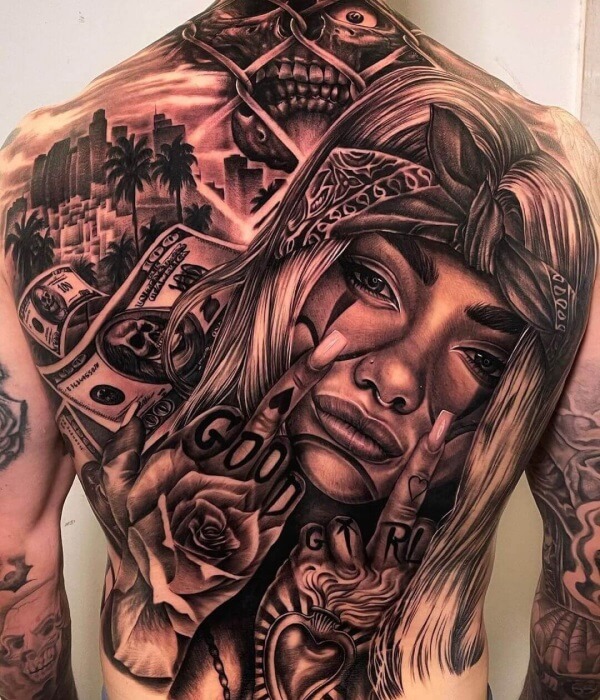
Chicano tattoos depict the history, culture, identity, and experiences of Mexican-Americans. Here are common meanings or beliefs associated with this form of tattoo art.
1. Cultural Identity
Chicano tattoos are more of acknowledging Mexican origin and balance with pride for the culture. Chicano tattoos represent the fight, the pride, and the strength of the Chicano nation. To many, they represent the pride of being Chicanos and passing on the culture that often includes themes of family, religion, and hope.
2. Spirituality and Faith
Some of these designs include crosses or the “Virgin Mary” (La Virgen de Guadalupe) or rosaries, an indicator of faith and defense. They are used as a way of calling people’s attention to the right thing to do, to encourage, or to help them get through a difficult time.
3. Family and Loyalty
These tattoos also refer to family, often by means of names, portraits, or phrases indicating loyalty towards family. A script used to write usually contains information to put meaningful phrases, names, or dates, in a way that is meant to produce togetherness.
4. Life Struggles and Survival
Chicano tattoos also represent some challenging life topics and people’s experiences, such as struggles, salvation, and the problems arising in cities.
5. Street and Gang Culture
In the past, Chicano tattoos were linked to gang life, and people used images to indicate their tribe or area. But it has stepped up from these conventionalisms and is now recognized as a style of art.
Also See: Different Tattoo Styles, Directions and Types in Tattooing
Different Design Elements in Chicano Tattoos
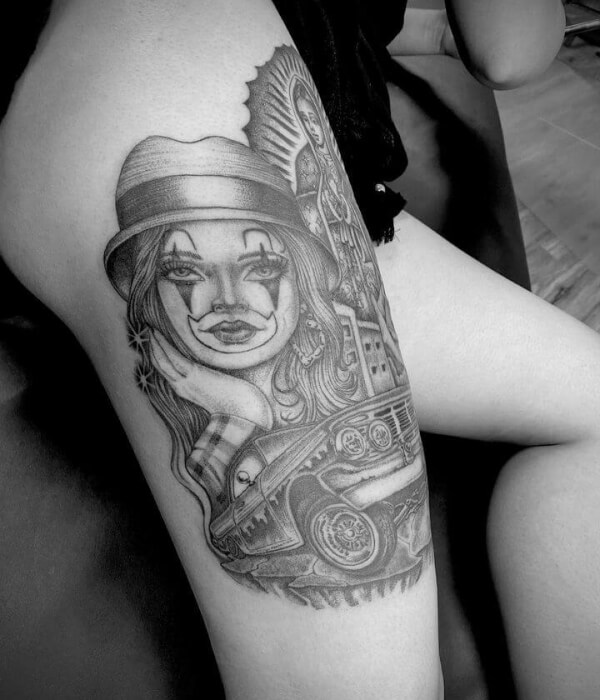
Chicano tattoos are special as they have unique design features and the use of drawing and meaning. All of the components portray the Chicano cultural and historical facts, hence they present a rich opportunity for representation. Here are some of the most iconic design elements found in Chicano tattoos:
1. Black and Gray Shading
A common characteristic of Chicano tattoos is the use of the black and grey color scheme only. This style was initially used in prison art when artists had very few materials available to them and even fewer tools. Through shading, the true depth, as well as texture, are achieved giving a dramatic and timeless appearance to the designs.
2. Religious Imagery
Religious images are essential to Chicano tattoos because of the community’s strong spiritual beliefs. Some of the most sought-after are the Virgin de Guadalupe, Jesus, angels, rosary, and crosses. These elements represent commitment, direction, and safeguard, and they are usually used to recall divine support.
3. Portraiture
Family members or friends, cultural heroes, or popular figures are usually pictured in the realistic field of Chicano Art. Reflecting expression and emotion are difficult in these tattoos because the images are very detailed and require a lot of experience. The portraits represent love, respect, and memory of a cherished one that is no more.
4. Script Lettering
Distinctive script fonts are used for inscribing names, meaningful phrases, or even mottos. The general typography is highly ornate and flowing with lines and sharp flourishes, hence giving the impression of elegance with strong effects.
5. Lowriders and Street Culture
Chicano tattooing touches upon aspects of Chicano culture with personalization, lowrider, gang, and graffiti art tattooing. Lowriders are especially pride and individualism to those of Chicano ethnicity, being an essential part of Chicano culture.
6. Aztec and Mayan Motifs
Aztec or Mayan designs for tattoos are a tribute to the native heritage of Mexican people. Concerning designs may include calendars, warriors, deities, or geometric patterns that may represent the history of the people, strength as well as links with their tradition.
7. Clown Faces and Drama Masks
Clowns are smiling or crying faces, and theater masks are also often depicted in Chicano tattoo patterns. Such designs can signify the two aspects of life, happiness and grief, victory and defeat. They may also present overt themes of irony, humor, or people wearing an outer surface of one persona while showing another on the inside.
8. Roses and Flowers
Many Chicano tattoos include floral patterns, and rose patterns. It commonly denotes beauty, love, and passion but can also mean sacrifice or mourning depending on the design of the tattoo.
9. Chains and Barbed Wire
These are auspices for featuring conflict, imprisonment, or tenacity. Chains can symbolize individual struggles, or the social issues that the Chicano community experiences, and barbed-wire gives a tough, raw look.
10. Skulls and Calaveras
Skulls, particularly sugar Skulls or “calaveras,” are associated with Mexican customs such as “Day of the Dead” (Día de los Muertos). These tattoos celebrate life, pay homage to the dead and accept life as a cycle that comprises birth and death.
Popular Phrases in Chicano Tattoos
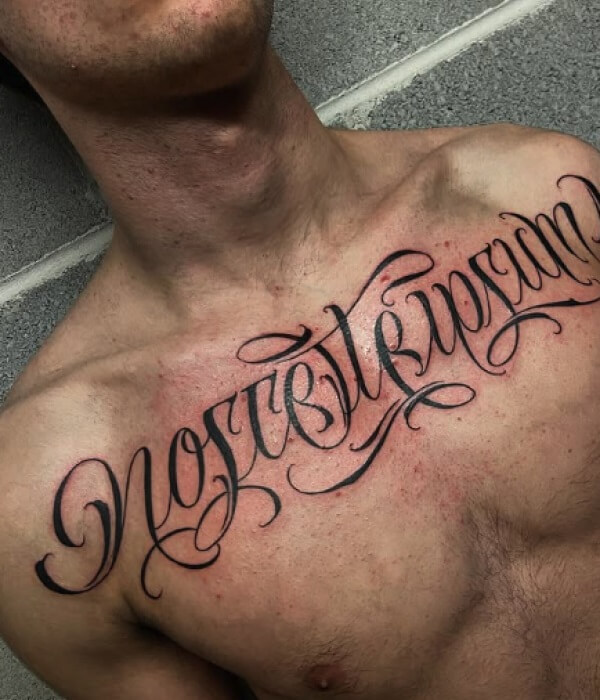
Another characteristic element of Chicano tattoos is meaningful phrases and quotes that are written in calligraphy masterfully. The phrases usually are related to issues of faith in God, family values, hardship and ethnic identity. Below are some of the most popular phrases seen in Chicano tattoos, along with their symbolic meanings:
- “Mi Vida Loca” (My Crazy Life): This phrase is the epitome of expressing life as chaotic and not predictable in nature.
- “Familia Primero” (Family First): A phrase symbolizing commitment to one’s family, loyalty, and love for one’s relations.
- “Por Vida” (For Life): This phrase goes to show lifelong commitment and loyalty, often towards family, friends, or one’s cultural heritage.
- “Solo Dios Puede Juzgarme” (Only God Can Judge Me): This expression shows faith and defiance, in personality, and emphasis has been placed on belief.
- “La Vida Es un Sueño” (Life Is a Dream): This philosophical saying encourages people to think about how lightly life passes along with surreal activities, often inspiring gratitude and mindfulness.
Conclusion
In conclusion, the Chicano tattoo style reflects a strong message of cultural identity, personal narration, and artistry. Emerging from the collective experiences and heritages of Mexican-American people, it reflects concepts of faith, family, endurance, and pride. Its style, with typical black-and-gray shading, elaborate designs, and meaningful motifs, transforms from its origins to emerge as an esteemed art form everywhere.

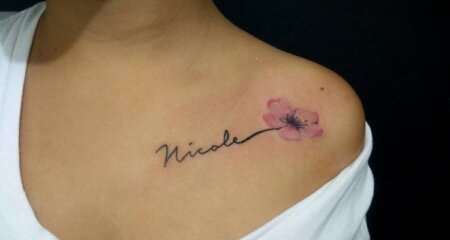
![30 Best Cobra Tattoo Ideas, Designs And Meaning [2025] 30 Best Cobra Tattoo Ideas, Designs And Meaning [2025]](https://www.trendingtattoo.com/wp-content/uploads/2025/01/Cover-2-450x240.jpg)

